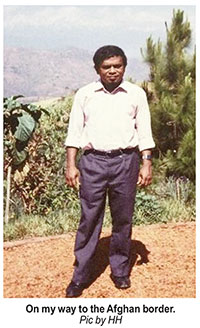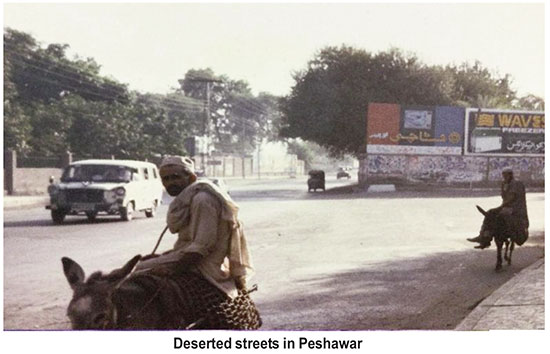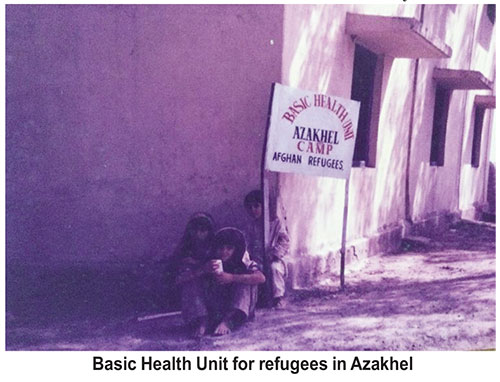US decision or Joe Biden’s decision to leave Afghanistan was correct in terms of ‘original sin’ and the socio-political, and cultural contradictions, created during the ‘colonial occupation’ since 2001. However the way they are withdrawing creates the impression that the US and other Western allies are in a terrible mess.
Without much common sense, the American and allied troops were withdrawn before their civilian supporters or citizens were evacuated. Academics and students were among them. That is why we still have a chaotic situation at the Kabul airport. Twenty odd people have already been killed. At least some of them fell from the first aircraft leaving. The scene was very much similar to Saigon, 46 years ago.
Joe Biden blamed the Afghan forces that they recruited, trained and armed during the last 20 years. ‘What can we do if they cannot fight the Taliban?’ was his explanation for the apparent betrayal. In that case why the hell did the US go to Afghanistan and virtually occupy this other people’s country? Biden did not blame President Ashraf Ghani who fled the country before anyone else.
Hypocrisy of US policies
 So many ambiguities and contradictions are exposed in respect of US foreign policies, as a result of the present crisis. Biden claimed, like other previous presidents, that US foreign policies are guided by international human rights. In the same speech he said that there is nothing more to gain by the US being in Afghanistan. His reasoning was that the US invaded Afghanistan because of the 9/11 terrorist attacks and to punish Osama bin Laden as a way of meting out justice that the American victims and people deserved.
So many ambiguities and contradictions are exposed in respect of US foreign policies, as a result of the present crisis. Biden claimed, like other previous presidents, that US foreign policies are guided by international human rights. In the same speech he said that there is nothing more to gain by the US being in Afghanistan. His reasoning was that the US invaded Afghanistan because of the 9/11 terrorist attacks and to punish Osama bin Laden as a way of meting out justice that the American victims and people deserved.
Osama bin Laden was caught and killed in 2011. Then why didn’t the Americans leave Afghanistan immediately after that? Ten more years have gone by since then. Bin Laden was not killed in Afghanistan, but in Pakistan. Even if the US wanted to eliminate not only Bin Laden but also al-Qaeda, which might make sense, why did they want to occupy the whole of Afghanistan?
There is no question that not only the US, but Western countries in general, are interested in promoting human rights and democracy in their foreign policies. But their self-interests are the cornerstone, and these interests as well as their human rights policies are overwhelmingly still marked by a form of colonial mentality. This has been the crisis from Saigon to Kabul.
History
Some people believe that the US intervention in Afghanistan started in 2001. That is not the case. It goes back to the beginning of the Cold War. Both the Soviet Union and the US wanted to keep Afghanistan as a client state. During the period of Daoud Khan (1953-1978), Afghanistan zig zagged between the two superpowers. The opportunity was taken up by the Communists and created a revolution in 1978. Afghanistan was named a People’s Democratic Republic. That was when the US started directly funding and arming Mujahideen movements of various types through Pakistan. Then the Soviet Union intervened and first invaded the country.
Understandably, any type of socialism was anathema to the US. It was not on the basis of human rights but for economic or profit reasons. It is not true that only the US backed regime after 2001 created circumstances that ensured women’s right to education and work. Those were introduced between 1978 and 1990. The communist regime also was repressive and the ordinary or rural people disliked some of the policies on religious grounds. That was the basis for the people-based Mujahedeen movements. There is evidence that the US, perhaps unintentionally, prompted some Arab Mujahideen groups to get involved in the Afghan civil war. Certain origins of Al Qaeda goes back to these efforts, if not Taliban.
Personal experience
 I had to visit the UNHCR office in Peshawar in 1989 as a World University Service (WUS) representative. WUS Pakistan was assisting refugees independently and apolitically. The visit involved visiting refugee camps in Azakhel and further towards the Pakistan-Afghan border. There was no possibility of crossing the border or visiting Jalalabad in Afghanistan given the heavy fighting.
I had to visit the UNHCR office in Peshawar in 1989 as a World University Service (WUS) representative. WUS Pakistan was assisting refugees independently and apolitically. The visit involved visiting refugee camps in Azakhel and further towards the Pakistan-Afghan border. There was no possibility of crossing the border or visiting Jalalabad in Afghanistan given the heavy fighting.
The wounded who were treated at Medicine San Frontier makeshift hospitals were disheartening to look at. In many makeshift camps, young boys carried heavy arms, perhaps guarding their mothers and sisters. These were supposed to be the future Taliban. I was not allowed to take many pictures except of some male refugees/activists (picture 1) and a side view of the Basic Health Unit at Azakhel Camp (picture 2). The streets in Peshawar at that time were largely deserted due to the war (picture 3).
My visit from Geneva was after the Geneva Accords in 1988 between Afghanistan and Pakistan, guaranteed by the US and the Soviet Union. The Soviet Union withdrew and the US promised not to support any faction, true or not. The civil war continued and resulted in a Taliban governed Islamic Emirate in 1997 with many other insurgency (terrorist) groups still operating in the country. The new Emirate was recognised only by a few countries, mainly Saudi Arabia, Pakistan and the UAE. And it fell quite quickly in 2001 when the US invaded.
This bit of history shows how the US, Soviet Union now gone, was involved in the Afghan debacle from the beginning, and the consequences would be extremely difficult to eliminate in the foreseeable future.
What is created?
The speed of the collapse of the US backed Afghan government of Ashraf Ghani shows the futility of what the US and some other Western governments were doing in Afghanistan during the last twenty years in the name of ‘democratic nation building.’
Democracy or human rights could be ensured primarily through internal forces and changes. These cannot be achieved through occupation or colonialism. External examples or diplomatic influence can be useful, if implemented in a friendly manner and not in an arrogant way. Even at present, the way many Western countries reacted to the first press conference of the Taliban was dismissive and arrogant.
It may be true that what they said about the rights of women, female children, the press, and amnesty to those who supported the last government cannot be fully trusted. All might depend on the circumstances. However, those should be welcomed instead of condemned outright for the sake of promoting them in a positive direction. Qualifications must be warranted, instead of sarcasm or condemnation.
What was created by the Western occupiers in Afghanistan appears to be shallow. It is true that some of the middle class sections in urban Kabul and the suburbs embraced Western values, democracy and human rights. That is good. But the great majority of the rural and remote communities were left out. They may have different values or be oblivious of democracy or human rights. Education ought to take precedence over propaganda.
What the occupation largely created were refugees. At present the population in Afghanistan is estimated to be around 40 million. According to the UNHRC, around six million Afghans are living in Iran and Pakistan as refugees. Some of them are reported to be coming back now with some national hope. The UNHCR estimated that Afghan refugees in other, mainly Western, countries amount to nearly three million. They would not come back. Who is unwilling to live in a developed country instead of a poor and a conflict ridden country? The present exodus at the Kabul airport might include not only those who worked for the occupied government but also those who aspire to live in a Western country. Large disparities in living conditions between rich and poor countries is the main reason for such an exodus.
Future challenges
 It would be an extremely difficult task for any future government in Afghanistan to run the economy, day to day administration, while rectifying confusions and conflicts created by the occupiers as well as the Afghans themselves over the past 50 years. Infrastructure development might be a top priority. One hope might be China who would offer to build destroyed or absent infrastructure in the country. There are of course skyscrapers and KFCs built in Kabul. But those are not for the poor or the ordinary.
It would be an extremely difficult task for any future government in Afghanistan to run the economy, day to day administration, while rectifying confusions and conflicts created by the occupiers as well as the Afghans themselves over the past 50 years. Infrastructure development might be a top priority. One hope might be China who would offer to build destroyed or absent infrastructure in the country. There are of course skyscrapers and KFCs built in Kabul. But those are not for the poor or the ordinary.
However, international forces may intervene. China might not be in a position to sort them out at all. China anyway cannot be a panacea. It still does not have much leverage in the UN system or the international community. Therefore, going by the colonial mentality of most of the Western countries, not to speak of the US, there can be future challenges including certain invasions and external influences. There may be a need to look for friends in the West as well. This is what Vietnam did after Saigon.
Of course, there would be major internal challenges as well. Apart from the Taliban, there have been half a dozen other armed groups in Afghanistan. Many have now been integrated into the Taliban, but not all. There can be challenges from ISIS or the remaining Al Qaeda. Whether Afghanistan would again become a haven for international terrorism is also a question. Even about the Taliban itself, we really don’t know much. Therefore, we really have to keep our fingers crossed but not be completely pessimistic, negative or arrogant like the Western pundits.
There is an apparent difference in the Taliban between, for example, 2001 and 2021, that may bring hope for a progressive world. The lessons from Saigon to Kabul are very clear. Diplomacy without interference might be the best for the world in promoting democracy and human rights.
Pics by Laksiri Fernando
Post Disclaimer
Disclaimer: From Saigon to Kabul: Questionable approaches of the West, and future of Afghanistan By Dr. Laksiri Fernando - Views expressed by writers in this section are their own and do not necessarily reflect Latheefarook.com point-of-view